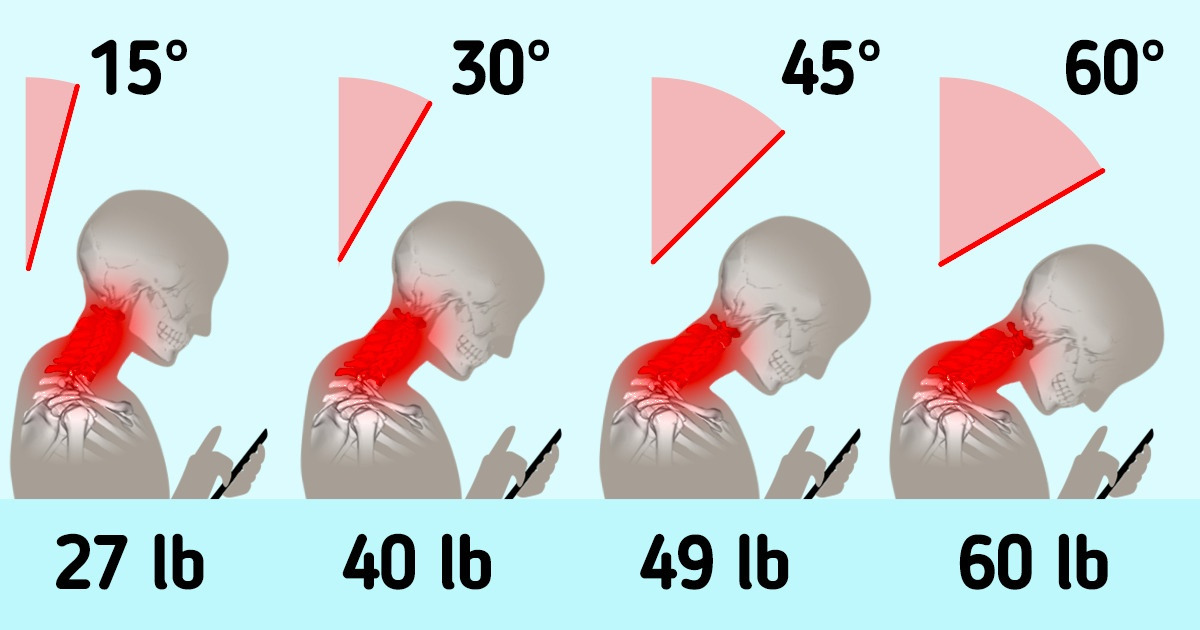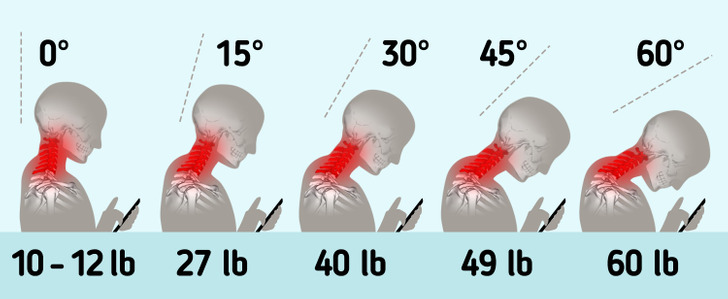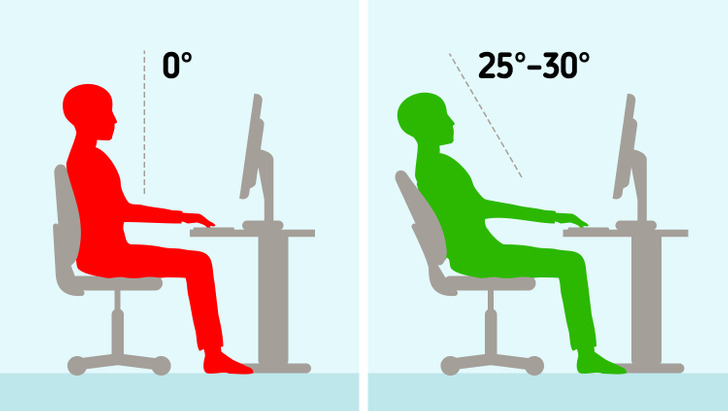What Tech Neck Syndrome Is, and What Dangers It Hides

5-Minute Crafts is going to tell you more about what it is and how to avoid it.
❗ It’s important: All the information presented in the article is for informational purposes only. In case of any issue with the spine, consult with a doctor.
When people are working at a computer or looking at a smartphone screen, the muscles in the back of the neck contract to support the weight of the head. The more a person looks down, the more actively the muscles holding the head will work. As a result, these muscles get tense and start to ache. It’s this very thing that is referred to as “tech neck.” Keeping the head in this position strains not only the muscles of the back of the neck but also the intervertebral discs.
If your head is positioned correctly relative to your shoulders, then its weight will feel like about 10-12 lb. However, if you move your head just a few inches, the load on the neck muscles will increase significantly. The neck, in its turn, is not designed to withstand such a load for a long time.
Doctors warn that this tech neck syndrome can cause headaches, pain in the neck, shoulders, and upper back, tingling pain and numbness in the arms and hands, and even the loss of the spine’s natural curve. Scientific research says that there is a clear connection between the amount of time that people spend on the phone and at the computer and the duration and severity of neck pain.
The signs and symptoms of a tense neck due to working at a computer

- Pain in the neck or upper back: This pain may be localized to one specific area and feel intense or stabbing, or it may cover a wider area, like, for example, from the lower neck to the shoulder(s).
- Protruding head and rounded shoulders: The muscles of the neck, chest, and upper back may change due to a prolonged forward tilt of the head.
- Headaches
- Tingling pain and numbness in the arms and hands connected with spinal nerve irritation and inflammation
- Pain in the jaw can be caused by the displacement of the cervical spine. A misalignment of the cervical spine and/or muscle imbalances can lead to jaw or temporomandibular joint pain.
- Decreased mobility or stiffness in the neck, upper back, and shoulders
- Increased pain when bending the neck: tech neck symptoms tend to get worse when the neck bends into the position that initially caused the problem — when the person looks down and writes a text message, for example.
- Prolonged head tilting in the wrong position is associated with imbalance, as the center of gravity of the head moves further away from the body. This process can lead to muscle imbalances and changes in posture.
What can be done to relieve symptoms

- Work at the computer on a chair with good lumbar support. Sit with an incline of 25°-30°.
- Take breaks every 30 min, and warm yourself up for at least 2 minutes. It will make your blood circulate and your neck will get in the right position.
- See a physiotherapist: let the doctor prescribe you the necessary set of exercises, as well as getting massages.
- Watch your posture and do stretching exercises. Make sure to watch your condition, and make sure that the pain is not there. If you do neck stretching or posture exercises and your symptoms get worse, see your doctor.
- Hold the phone at the level of your eyes and limit the time you spend in front of the screen.
- Do chin tucks. Draw your head straight back like you’re making a double-chin. This position lets you offset the effects of constantly keeping your head forward. Try not to tilt your head back and keep your chin tucked in but still parallel to the floor. Hold for 5 seconds, release. Then repeat.
- Roll your shoulders back. Throughout the working day, roll your shoulders up and back, shifting your head back at the same time.